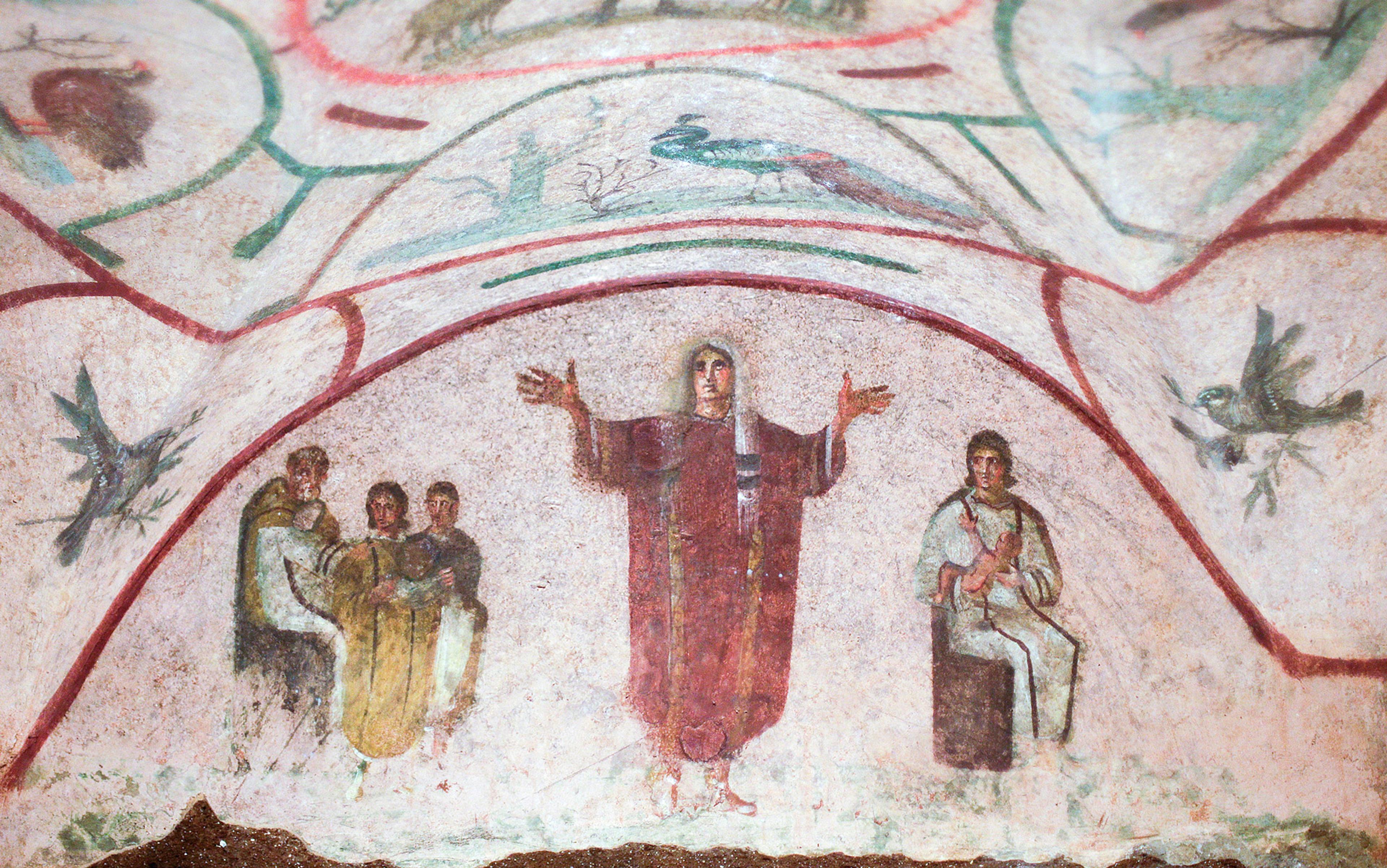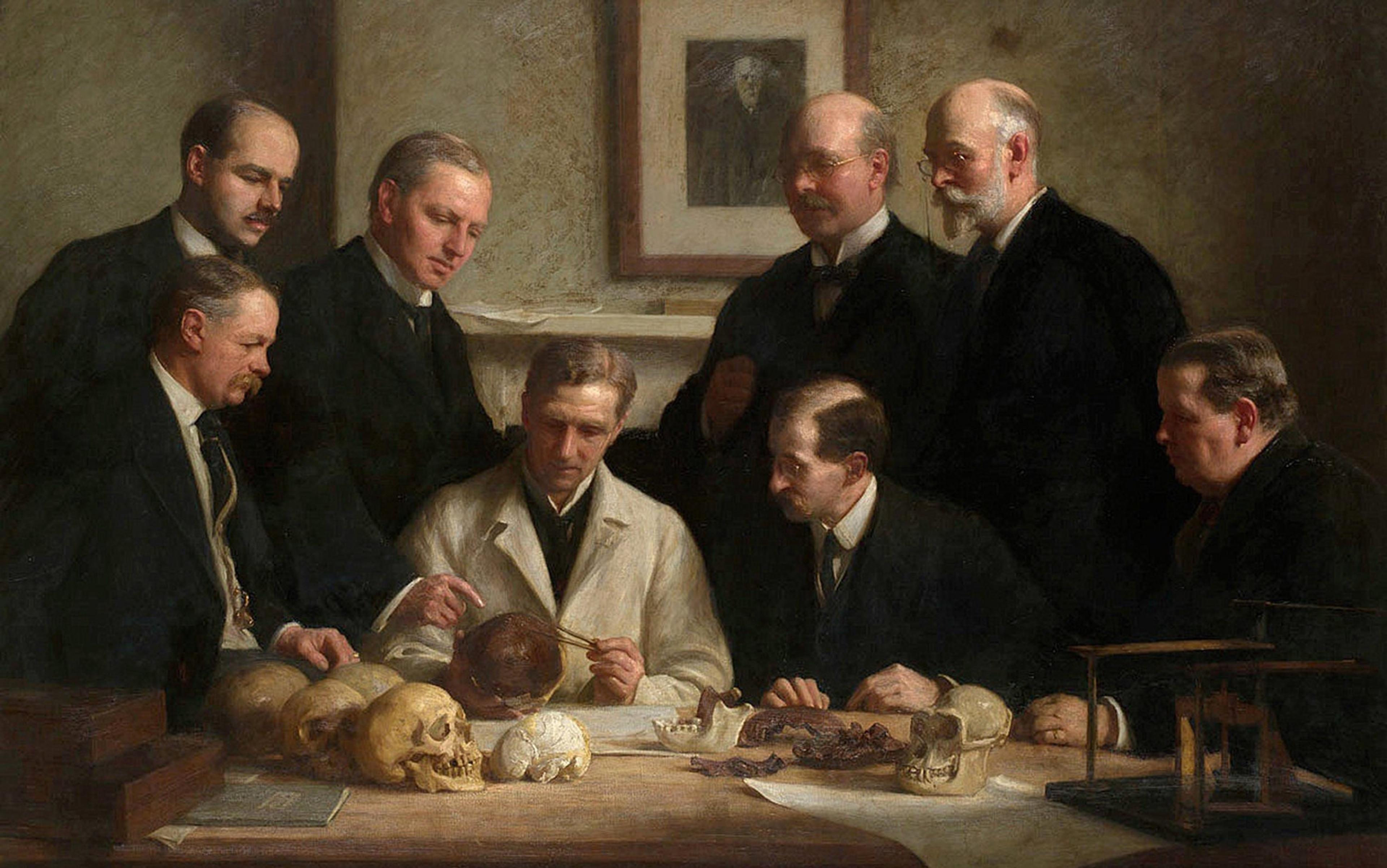Most New Testament scholars agree that some 2,000 years ago a peripatetic Jewish preacher from Galilee was executed by the Romans, after a year or more of telling his followers about this world and the world to come. Most scholars – though not all.
But let’s stick with the mainstream for now: the Bible historians who harbour no doubt that the sandals of Yeshua ben Yosef really did leave imprints between Nazareth and Jerusalem early in the common era. They divide loosely into three groups, the largest of which includes Christian theologians who conflate the Jesus of faith with the historical figure, which usually means they accept the virgin birth, the miracles and the resurrection; although a few, such as Simon Gathercole, a professor at the University of Cambridge and a conservative evangelical, grapple seriously with the historical evidence.
Next are the liberal Christians who separate faith from history, and are prepared to go wherever the evidence leads, even if it contradicts traditional belief. Their most vocal representative is John Barton, an Anglican clergyman and Oxford scholar, who accepts that most Bible books were written by multiple authors, often over centuries, and that they diverge from history.
A third group, with views not far from Barton’s, are secular scholars who dismiss the miracle-rich parts of the New Testament while accepting that Jesus was, nonetheless, a figure rooted in history: the gospels, they contend, offer evidence of the main thrusts of his preaching life. A number of this group, including their most prolific member, Bart Ehrman, a Biblical historian at the University of North Carolina, are atheists who emerged from evangelical Christianity. In the spirit of full declaration, I should add that my own vantage point is similar to Ehrman’s: I was raised in an evangelical Christian family, the son of a ‘born-again’, tongues-talking, Jewish-born, Anglican bishop; but, from the age of 17, I came to doubt all that I once believed. Though I remained fascinated by the Abrahamic religions, my interest in them was not enough to prevent my drifting, via agnosticism, into atheism.
There is also a smaller, fourth group who threaten the largely peaceable disagreements between atheists, deists and more orthodox Christians by insisting that evidence for a historical Jesus is so flimsy as to cast doubt on his earthly existence altogether. This group – which includes its share of lapsed Christians – suggests that Jesus may have been a mythological figure who, like Romulus, of Roman legend, was later historicised.
But what is the evidence for Jesus’ existence? And how robust is it by the standards historians might deploy – which is to say: how much of the gospel story can be relied upon as truth? The answers have enormous implications, not just for the Catholic Church and for faith-obsessed countries like the United States, but for billions of individuals who grew up with the comforting picture of a loving Jesus in their hearts. Even for people like me, who dispensed with the God-soul-heaven-hell bits, the idea that this figure of childhood devotion might not have existed or, if he did, that we might know very little indeed about him, takes some swallowing. It involves a traumatic loss – which perhaps explains why the debate is so fraught, even among secular scholars.

Secondo Pia’s photograph of the Shroud of Turin (May 1898), digital print from the Musée de l’Élysée, Lausanne. Courtesy Wikipedia
When I’ve discussed this essay with people raised as atheists or in other faiths, the question invariably asked goes something like this: why is it so important for Christians that Jesus lived on earth? What is at stake here is the unique aspect of their faith – the thing that sets it apart. For more than 1,900 years, Christianity has maintained the conviction that God sent his son to earth to suffer a hideous crucifixion to save us from our sins and give us everlasting life. Jesus’ earthbound birth, life and particularly his death, which ushered in redemption, are the very foundation of their faith. These views are so deeply entrenched that, even for those who have loosened the grip of belief, the idea that he might not have been ‘real’ is hard to stomach.
You’d think that a cult leader who drew crowds, inspired devoted followers and was executed on the order of a Roman governor would leave some indentation in contemporary records. The emperors Vespasian and Titus and the historians Seneca the Elder and the Younger wrote a good deal about 1st-century Judea without ever mentioning Jesus. That could mean simply that he was less significant an actor than the Bible would have us think. But, despite the volume of records that survive from that time, there is also no death reference (as there was, say, for the 6,000 slaves loyal to Spartacus who were crucified along the Appian Way in 71 BCE), and no mention in any surviving official report, private letter, poetry or play.
Compare this with Socrates, for example. Though none of the thoughts attributed to him survive in written form, still we know that he lived (470-399 BCE) because several of his pupils and contemporary critics wrote books and plays about him. But with Jesus there is silence from those who might have seen him in the flesh – which is awkward for historicists like Ehrman; ‘odd as it may seem,’ he wrote in 1999, ‘[i]n none of this vast array of surviving writings is Jesus’ name ever so much as mentioned.’ In fact, there are just three sources of putative proof of life – all of them posthumous: the gospels, the letters of Paul, and historical evidence from beyond the Bible.
Christian historians base their claims for a historical Jesus on the thinnest mentions of early Christians by the Roman politicians Pliny the Younger and Tacitus (who write of Christians they interviewed early in the 2nd century – in Pliny’s case, a tortured female deacon – all followers of ‘The Way’ who talked about Jesus) and by Flavius Josephus, a Romanised Jewish historian. Josephus’s 20-volume Antiquities of the Jews, written around 94 CE, during the reign of Domitian, contains two references to Jesus, including one claiming that he was the Messiah crucified by Pontius Pilate. This would carry some weight if Josephus actually wrote it; but the experts, including evangelicals like Gathercole, agree this reference was likely forged by the 4th-century Christian polemicist Eusebius. The other reference is to ‘the brother of Jesus, who was called Christ, whose name was James’. Some scholars say the ‘called Christ’ bit was a later addition, but it hardly matters when Josephus was drawing from stories told by Christians more than six decades after Jesus’ assumed crucifixion.
If the crucifixion was prophesied, then how can it have been embarrassing?
The earliest evidence testifying to a historical figure comes not from contemporary records, but from the letters of Paul, which date broadly from 50 to 58 CE (of the 14 letters originally attributed to Paul, only half are now thought to be mainly his writing, with the rest thought to be written sometime in the 2nd century). The problem with Paul for proof-seekers is how little he says about Jesus. If Jesus lived and died in Paul’s lifetime, you might expect he’d refer to Jesus’ ministry on earth – to his parables, sermons and prayers – and that his readers would want this crucial life story. But Paul offers nothing on the living Jesus, such as the stories or sayings that later appear in the gospels, and he provides no information from human sources, referring only to visionary communication with Jesus and to messianic Old Testament quotes.
Which brings us to the gospels, written later, and not by those whose names they bear (these were added in the 2nd and 3rd centuries). The gospel of Mark, which borrows from Paul, came first and set the template for the gospels that followed (Matthew draws from 600 of Mark’s 661 verses, while 65 per cent of Luke is drawn from Mark and Matthew.) The first version of Mark is dated between 53 CE and around 70 CE, when the Second Temple was destroyed, an event it mentions. The last gospel, John, which has a different theology and stories that contradict those of the three ‘synoptic’ gospels, is dated at around 100 CE. All four gospels include sections written in the 2nd century (among them, two different virgin birth narratives in Matthew and Luke), and some scholars place the final 12 verses of Mark in the 3rd century. Several historians assume that Matthew and Luke had an earlier source they call Q. However, Q has never been found and there are no references to it elsewhere. Barton suggests that a belief in Q may serve a ‘conservative religious agenda’ because to say these gospels drew from an earlier source ‘is an implicit denial that they made any of it up themselves’.
Taken together, what can the gospels tell us about the historical Jesus? Secular scholars agree that much of their content is fictional, and note, as Ehrman puts it, that ‘these voices are often at odds with one another, contradicting one another in minute details and in major issues’. And yet Ehrman is convinced that Jesus existed; he contends that the gospel writers heard reports about Jesus and ‘decided to write their own versions’. A few basic facts, like the dates of Jesus’ birth and death (gleaned from their mention of various rulers), are widely accepted, and several of Jesus’ sayings are said to be close to his real words. To separate the factual wheat from the fictional chaff, they employ ‘criteria of authenticity’ – stories and words that ring true. The three main criteria are: embarrassment (are those details out of step with 1st-century Judaism and, if so, why would the gospel writers invent things that would cause problems?); multiple attestation (the more sources, the better); and coherence (are details consistent with what we know?)
However, there is good reason to interrogate this approach. With regard to the criteria of multiple attestation and coherence, we know the gospel writers borrowed from each other, so we’d expect them to include the same stuff. The gospel of Luke, for instance, borrowed Matthew’s ‘consider the lilies of the field’ speech, but if Matthew’s tale is fabricated, Luke’s repetition hardly adds credibility. In addition, the ‘embarrassment criterion’ relies on our knowing what went against the grain. But the Church was diverse when the gospels were written and we can’t be sure what might have embarrassed their authors. It’s often argued, for example, that the gospel writers went to such great lengths to show that the crucifixion was predicted in the Hebrew scriptures in order to make it palatable to an audience convinced that no true messiah could be thus humiliated. But this argument can be turned on its head if we accept that the crucifixion tale was included because the gospel writers – pace Paul – believed it was required to fulfil prophesy. If the crucifixion was prophesied, then how can it have been embarrassing?
On the subject of the crucifixion, it’s worth noting that, while the four accepted gospels have Jesus sentenced to death by Pontius Pilate, in the non-canonical gospel of Peter it is Herod Antipas who does the deed. The gospel of Thomas, meanwhile, makes no mention of Jesus’ death, resurrection or divinity at all. According to the 4th-century theologian Epiphanius, the Torah-observant Nazorean Christians (thought to have descended from the first group of believers), held that Jesus lived and died during the reign of King Alexander Jannaeus (10-76 BCE) – a century before Pontius Pilate. And the Babylonian Talmud agrees, claiming that Jesus was executed by stoning and ‘hanging’ in the town of Lydda (not Jerusalem) for ‘immorality, sorcery and worshipping idols’. So, even when the ‘criteria of authenticity’ are met, historical consensus is hard to establish.
The most concerted effort to separate fact from fiction started in 1985 when a group of mainly secular scholars were drawn together by the lapsed Catholic theologian Bob Funk. Funk’s ‘Jesus Seminar’ met twice a year for 20 years to ‘search for the historical Jesus’. At its launch, Funk said the group would enquire ‘simply, rigorously after the voice of Jesus, after what he really said.’ These scholars (eventually numbering more than 200) used the ‘criteria of authenticity’ to assess the deeds and words of Jesus as reported in the gospels. Many seminars later, following much debate, they concluded that Jesus was an iconoclastic Hellenistic Jewish preacher who told stories in parables and spoke out against injustice; that he had two earthly parents; and that he did not perform miracles, die for people’s sins or rise from the dead. The veracity of his sayings and deeds was decided by a group vote. Scholars were invited to place plastic beads in a box: red (three points) if Jesus said it; pink (two points) if he probably said it; grey (one point) if he didn’t, but it reflected his ideas; black (zero) if invented. When tallied, there were black or grey beads for 82 per cent of Jesus’ Biblical sayings, and 84 per cent of his deeds.
Such methods are regarded as quaint, at best, by scholars researching non-Biblical historical figures. One of those I canvassed was Catharine Edwards, professor of classics and ancient history at Birkbeck, University of London, who said that some historians of the ancient world tend towards scepticism – ‘for example, we can’t really know anything about the earliest stage of Roman history beyond what is gleaned from archaeological evidence’ – while others tend towards ‘extreme credibility’. But, even among those, ‘criteria of authenticity’ are not a familiar tool. She added that the coloured-beads approach ‘sounds naive and on the credulous end of the spectrum where scholars make assumptions about the character of a particular ancient individual and on that basis decide what they think he (invariably) may or may not have said.’
Hugh Bowden, professor of ancient history at King’s College London, said that there was more evidence for the existence of Socrates and Pericles than for Jesus, but ‘much less hangs on it’. The focus on the historicity of Jesus has ‘no real equivalent in other fields, because it is rooted in confessional preconceptions (early Christianity matters because modern Christianity matters) even when scholars claim to be unaffected by personal religious views. Historians in other fields would not find the question very important.’
The sceptics believe that Jesus was a mythical figure who was subsequently historicised
If we remove those preconceptions, it seems commonsensical to apply caution to the historicity of the gospels and let doubt lead our interrogations. The first gospel, Mark, was begun nearly half a century after Jesus’ ministry (and its final verses much later). Jesus’ Aramaic-speaking followers were probably illiterate, and there were no reporters taking notes. The likelihood of Jesus’ words being accurately reproduced by writers who’d never met him, and were elaborating on increasingly fanciful tales passed down through the decades, seems remote.
One scholar who was part of the Jesus Seminar and yet harboured such doubts, is Robert Price, a respected New Testament professor with a PhD in ‘Systematic Theology’, and a former Baptist pastor turned atheist. Price came to query the methodology used to establish historicity, prompting him to doubt whether Jesus ever lived. ‘If there ever was a historical Jesus there isn’t one anymore,’ he said, later writing: ‘There may have been a real figure there, but there is simply no longer any way of being sure.’
Price became the heavyweight figure for a fringe group of ‘Christ myth’ sceptics – historians who propose that early Christians, including Paul, believed in a celestial messiah and that he was placed in history by the gospel writers in the next generation. So, while most of the 200 believe Jesus was a historical figure mythologised by the gospel writers, the sceptics believe the opposite: he was a mythical figure who was subsequently historicised.
Such ideas have been around for centuries. Thomas Paine was an early adopter but it was the 19th-century German philosopher Bruno Bauer who advanced the theory most assiduously. Bauer, an atheist, recognised the gospel themes as literary rather than historical, arguing that Christianity had pagan roots and that Jesus was a mythical creation.
In recent decades, it has become widely accepted by secular scholars that the Hebrew Bible (Old Testament) is more myth than history. In particular, the Israeli archaeologist Israel Finkelstein and his American colleague Neil Asher Silberman have written in The Bible Unearthed (2002) that none of the patriarchs, from Moses and Joshua backwards, existed as historical figures; that there was no record of Jews having been enslaved in Egypt (instead, they descended from the Canaanites); that David and Solomon were warlords rather than kings; and that the first temple was built three centuries after Solomon. But the view that the Christian Bible is similarly lacking in veracity has, until recently, been drowned out by those arguing for a flesh-and-blood Jesus. One reason for the consensual chorus may relate to the fact that tenured positions in departments dealing with Bible history tend not to be offered to those who doubt that Jesus was real. So the revival of the ‘doubters’ camp’ owes much to the internet, as well as to the missionary zeal of its key proponents.
Momentum began to gather in the 1990s with a series of books by Earl Doherty, a Canadian writer who became interested in scripture while studying ancient history and classical languages. Doherty claimed that Paul and other early Christian writers did not believe in Jesus as an earthly figure, but instead as a celestial being crucified by demons in the lower realms of heaven and then resurrected by God. His views (ironically, on the face of it, the most ostensibly religious, in being so thoroughly spiritualised) were rejected by historical Jesus scholars who claimed that Doherty lacked the academic nous to understand ancient texts. But the next wave, which included Price, was more firmly rooted in academia.
Price believes that early Christianity was influenced by Middle Eastern myths about dying and rising deities that survived into the Greek and Roman periods. One was a Sumerian legend, ‘The Descent of Inanna’, which tells of the queen of heaven who attends an underworld funeral only to get killed by demons and hung from a hook like a piece of meat. Three days later, however, she’s rescued, rises from the dead, and returns to the land of the living.
For ‘Christ myth’ scholars, the Jesus story fits the outlines of the mythic hero archetype
Another is the Egyptian myth of the murdered god-king Osiris. His wife, Isis, finds his body, restores it to life and, via a flash of lightning in one version, conceives his son, Horus, who succeeds him. Osiris goes on to rule over the dead. In Plutarch’s Greek version, Osiris is tricked to lie in a coffin, which floats out to sea before washing up at the city of Byblos. There, Isis removes Osiris’ body from a tree and brings it back to life.
Several Jewish texts in circulation at the time reinforced the messianic aspects of these narratives. For instance, 1 Enoch (a book written mainly in the 2nd century BCE, and particularly revered within the Essene community, thought to be responsible for the Dead Sea Scrolls) refers to the ‘Son of Man’ (a phrase used for Jesus in the gospels) whose name and identity will be kept secret to prevent evildoers from knowing of him until the appointed time.
The favourite ‘Christ myth’ source is the Ascension of Isaiah, written in bits and pieces in the 1st and 2nd centuries. It includes a section dealing with a journey through the seven heavens by a non-human Jesus who is crucified in a lower heaven by Satan and his demonic ‘archons’ who are the rulers of that realm and yet do not know who he is. Again, the story ends with Jesus rising from the dead.
‘Christ myth’ scholars believe that ancient tales of death and resurrection influenced the gospel writers, who also borrowed from Homer, Euripides and the Hebrew Bible. For them, the Jesus story fits the outlines of the mythic hero archetype of the time – a spiritual saviour killed by ‘archons’ before rising triumphant. They contend that later Christians rewrote Jesus as a historical figure who suffered at the hands of earthly rulers.
The rock star of scepticism is Richard Carrier, a Bible scholar with a very modern aptitude for using social media (some of his lengthy YouTube videos have attracted more than a million viewers). He enters into fervent debates with rivals, lectures, and writes acerbic, clinical and fact-laden books. With his PhD in ancient history from the University of Columbia and his record of publishing in academic journals, his credentials are less easily dismissed than Doherty’s. Ehrman, for instance, acknowledges Carrier and Price are serious New Testament scholars.
At one time, Carrier accepted the historicity of Jesus but he became contemptuous of the mainstream position because of what he saw as the parlous state of scholarship supporting it. He and the Australian Bible historian Raphael Lataster use Bayes’ theorem, which considers historical probabilities based on reasonable expectations (weighing up the evidence and attaching mathematical odds to it), to conclude that it is ‘probable’ that Jesus never existed as a historical person, although it is ‘plausible’ that he did.
The ‘Jesus myth’ advocates get plenty of airplay, but the fringe label has stuck, and not just because religious studies departments freeze them out. Their own methodology has been criticised, not least their use of Bayesian methods. Bizarrely, Carrier offered odds to his readers, concluding that the likelihood of a real-life Jesus was no better than 33 per cent (and perhaps as low as 0.0008 per cent) depending on the estimates used for the computation, which illustrates the wooliness of this use of Bayes’ theorem.
Carrier and his comrades do a fine job poking holes in the methods of historicists but what they offer in exchange seems flimsy. In particular, they have found no clear evidence from the decades before the gospels to show that anyone believed Jesus was not human. Each reference in the epistles can be explained away as referring to a celestial saviour, but it all feels like a bit of a stretch. Paul frequently refers to the crucifixion and says Jesus was ‘born of a woman’ and ‘made from the sperm of David, according to the flesh’. He also refers to James, ‘the brother of Christ’. Using these examples, Ehrman says there’s ‘good evidence that Paul understood Jesus to be a historical figure’. Which was certainly the view of the writer/s of Mark, a gospel begun less than two decades after Paul’s letters were written.
Like the grain of sand that begat Robin Hood, the Jesus story developed fresh layers over time
If we accept this conclusion, but also accept that the gospels are unreliable biographies, then what we are left with is a dimly discernible historical husk. If Jesus did live at the time generally accepted (from 7-3 BCE to 26-30 CE) rather than a century earlier as some of the earliest Christians seemed to believe, then we might assume that he started life in Galilee, attracted a following as a preacher and was executed. Everything else is invention or uncertain. In other words, if Jesus did exist, we know next to nothing about him.
One way of looking at it is to think of a pearl, which starts as a grain of sand around which calcium carbonate layers form as an immune response to the irritant until the pearl no longer resembles the speck that started it. Many legends have developed in this way, from the tale of the blind bard Homer onwards.
The outlaw and thief Robert Hod was fined for failing to appear in court in York in 1225 and a year later he reappeared in the court record, still at large. This could be the grain of sand that begat Robin Hood, whom many people assumed to have been a historical figure whose legend grew over the centuries. Robin started as a forest yeoman but morphed into a nobleman. He was later inserted into 12th-century history with King Richard the Lionheart and Prince John (earlier versions had Edward I), along with his ever-expanding band of outlaws. By the 16th century, he and his Merry Men had mutated from lovable rascals to rebels with a cause who ‘tooke from rich to give the poor’.
The Jesus story likewise developed fresh layers over time. At the start of the common era, there may well have been several iconoclastic Jewish preachers, and one of them got up the noses of the Romans, who killed him. Soon his legend grew. New attributes and views were ascribed to him until, eventually, he became the heroic figure of the Messiah and son of God with his band of 12 not-so-merry men. The original grain of sand is less significant than most assume. The interesting bit is how it grew.






